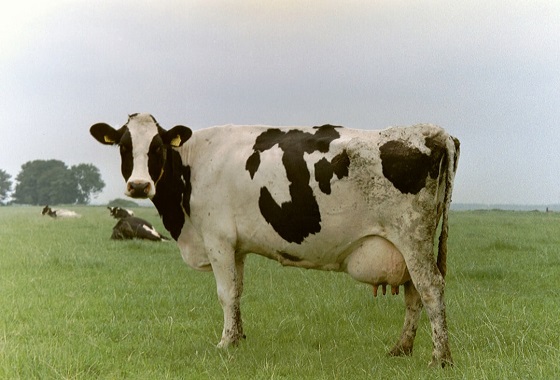Agriculture
What’s going on in India?

In many places around the world, the global turmoil of 2020 has been deeply exacerbated by accompanying political violence. The United States, Belarus, and India are just a few locations that have faced growing levels of internal violence and discord as political protests have led to dangerous clashes between citizens and governing bodies.
In India, where the COVID-19 pandemic has been rampant throughout the course of 2020, citizens have also experienced ongoing political uncertainty as recent protests against the Narendra Modi government have been met with violence.

Prime Minister Narenda Modi
The upheaval began in August in response to the Modi government’s decision to pass 3 reform laws that would negatively impact local farmers in India’s agricultural sector. The Farmers Produce Trade and Commerce Bill, the Farmers Agreement of Price Assurance and Farm Services Bill, and the Essential Commodities Bill were passed on September 20, 2020. These laws, which were allegedly hurried through parliament with little to no regard for the concerns expressed by existing farming organizations in India, serve to ease corporate restrictions and remove regulations put in place to protect farmers and their product.
Although there does appear to be a consensus surrounding the need for reform in India’s agricultural sector, the laws passed by the Modi government have been condemned for failing to meet the requirements of a fair, legitimate transition. According to Time, “While the government says the new laws will “empower farmers”, unions say the rule changes are not policies they have asked for. Instead they fear that instead of trying to help farmers, the government is opening the door to big corporations who may eventually force them off their land and out of their business.”
 Peaceful protests then emerged as a public response to the actions of the Modi government. The protests, which originated in Punjab and Haryana as a collaborative movement among Indian farmers, have since mobilized tens of thousands of farmers and supporters from across the country to march on the Indian capital. The protestors flooded New Delhi’s main entry points, where they have since set up camps to maintain their position and stand firmly for their cause, requesting the repeal of the 3 reform bills.
Peaceful protests then emerged as a public response to the actions of the Modi government. The protests, which originated in Punjab and Haryana as a collaborative movement among Indian farmers, have since mobilized tens of thousands of farmers and supporters from across the country to march on the Indian capital. The protestors flooded New Delhi’s main entry points, where they have since set up camps to maintain their position and stand firmly for their cause, requesting the repeal of the 3 reform bills.
Despite the peaceful nature of the protests, where many of the participants are senior members of the community, since September they have been increasingly met with violence from the state. “Protestors have been met with water cannons on some of the coldest winter days Delhi has experienced,” Global News reported in December, “along with tear gas, concrete barricades, and some were even beaten with batons.” As a result of state-mandated violence and harsh outdoor conditions in Delhi, a total of 65 deaths were reported between November 26, 2020 and January 3, 2021 (1).
Individuals and organizations around the world have since come forward to stand in solidarity with Indian farmers and condemn the acts of violence being perpetrated against them by military and law enforcement.
 On Tuesday, January 12, 2021, the Indian Supreme Court announced it was “halting the market-friendly laws until a committee of experts, appointed by the court, could consult with government officials and protesting farmers to try to find a solution to the dispute” (2). However, protestors have expressed initial skepticism following this announcement, and intend to maintain their positions within the protest camps until the laws are repealed.
On Tuesday, January 12, 2021, the Indian Supreme Court announced it was “halting the market-friendly laws until a committee of experts, appointed by the court, could consult with government officials and protesting farmers to try to find a solution to the dispute” (2). However, protestors have expressed initial skepticism following this announcement, and intend to maintain their positions within the protest camps until the laws are repealed.
“It’s cold and it’s hard to arrange water every morning for a bath,” says Shabek Singh, a member of the protests who remains camped in one of the established tent cities, “but we’re not going anywhere. We will make this our temple” (3).
For more stories, visit Todayville Calgary.
Agriculture
Federal cabinet calls for Canadian bank used primarily by white farmers to be more diverse

From LifeSiteNews
A finance department review suggested women, youth, Indigenous, LGBTQ, Black and racialized entrepreneurs are underserved by Farm Credit Canada.
The Cabinet of Prime Minister Mark Carney said in a note that a Canadian Crown bank mostly used by farmers is too “white” and not diverse enough in its lending to “traditionally underrepresented groups” such as LGBT minorities.
Farm Credit Canada Regina, in Saskatchewan, is used by thousands of farmers, yet federal cabinet overseers claim its loan portfolio needs greater diversity.
The finance department note, which aims to make amendments to the Farm Credit Canada Act, claims that agriculture is “predominantly older white men.”
Proposed changes to the Act mean the government will mandate “regular legislative reviews to ensure alignment with the needs of the agriculture and agri-food sector.”
“Farm operators are predominantly older white men and farm families tend to have higher average incomes compared to all Canadians,” the note reads.
“Traditionally underrepresented groups such as women, youth, Indigenous, LGBTQ, and Black and racialized entrepreneurs may particularly benefit from regular legislative reviews to better enable Farm Credit Canada to align its activities with their specific needs.”
The text includes no legal amendment, and the finance department did not say why it was brought forward or who asked for the changes.
Canadian census data shows that there are only 590,710 farmers and their families, a number that keeps going down. The average farmer is a 55-year-old male and predominantly Christian, either Catholic or from the United Church.
Data shows that 6.9 percent of farmers are immigrants, with about 3.7 percent being “from racialized groups.”
National census data from 2021 indicates that about four percent of Canadians say they are LGBT; however, those who are farmers is not stated.
Historically, most farmers in Canada are multi-generational descendants of Christian/Catholic Europeans who came to Canada in the mid to late 1800s, mainly from the United Kingdom, Ireland, Ukraine, Russia, Italy, Poland, the Netherlands, Germany, and France.
Agriculture
Bovaer Backlash Update: Danish Farmers Get Green Light to Opt Out as UK Arla Trial Abruptly Ends!

In a pivotal shift, Denmark’s Veterinary and Food Administration has issued new guidance: Farmers can immediately suspend Bovaer administration if they “suspect” it poses risks to herd health. On the heels of the Danish announcement—the major UK trial of Bovaer on 30 Arla Foods farms has abruptly ended amid health fears.
The Mandate Cracks: Farmers Given the Green Light to Opt Out
On November 5, 2025, Denmark’s Fødevarestyrelsen (Danish Veterinary and Food Administration) issued a press release and accompanying guidance clarified that farmers (specifically the herd manager, or besætningsansvarlige) could immediately exempt individual cows or entire herds from the mandatory Bovaer use if they suspected it was causing or exacerbating health issues, prioritizing animal welfare under existing regulations.
Sonia Elijah investigates is a reader-supported publication.
To receive new posts and support my work, consider becoming a free or paid subscriber.
This was in response to surging reports of cow illnesses since October 1, where farms with over 50 cows have been mandated to use the synthetic additive, Bovaer (containing 3-nitrooxypropanol), developed by DSM-Firmenich. If the farms do not comply, they face heavy fines.
Bovaer Backlash: Danish Cows Collapsing Under Mandatory Methane-Reducing Additive |
||||||
|
||||||
| Article updated: November 4 | ||||||
|
The guidance emphasized that exemptions apply to cases of feed-related metabolic disorders (e.g., fatty liver, milk fever, or rumen issues) and require documentation via a “tro- og loveerklæring” (declaration of good faith) on LandbrugsInfo, with veterinary consultation recommended for severe cases. No fines would apply for such welfare-based pauses, though farmers must still meet methane reduction goals via alternatives like increased feed fat. This effectively gave the “green light” for opting out on welfare grounds.
Reports surged of Danish dairy farmers unilaterally halting Bovaer administration, accusing the government of “poisoning” livestock to meet climate targets.
A November 3, 2025, article in LandbrugsAvisen (Denmark’s leading agricultural newspaper), quoted veterinarian Torben Bennedsgaard from BoviCura (a specialized cattle health advisory service closely tied to Danish dairy producers). He stated: “Every other farmer has problems with Bovaer.”
“Bovaer is a proven, effective and safe solution”
A spokesperson for DSM-Firmenich, the company that developed Bovaer, told Agriland, that “animal welfare is our highest priority”. They went on to state: “We are actively engaging with the relevant organisations to ensure that all these concerns are fully investigated and properly addressed..In previously reported cases, Bovaer was not identified as a contributing factor to the health concerns raised…Bovaer is a proven, effective and safe solution that has been successfully used for over three years by thousands of farmers in over 25 countries.”
UK Ripple Effects: Arla Trial Abruptly Halted
On 7 November, the BBC reported that the major UK trial of Bovaer on 30 Arla Foods farms concluded earlier than planned amid “farmer health concerns” for cows, echoing Danish reports. It stated: ‘Bovaer is now the focus of an investigation in Denmark after farmers raised fresh concerns but manufacturer DSM-Firmenich said the additive was “proven, effective and safe.”’
Arla, which supplies major retailers like Tesco and Aldi, is now reviewing data before deciding on wider rollout. The trial aimed to cut methane by 30% but faced criticism for lacking transparency on animal impact.
Jannik Elmegaard, of the Danish Food and Veterinary Administration, told the BBC: “They very aware that some herd owners have reported animals showing signs of illness after being fed with Bovaer” but it was “unclear how many cows were affected”.
Last year, I reported on the UK’s Arla trial—whilst digging through various safety assessment reports on Bovaer, I came across several troubling findings and anomalies.
BREAKING: Methane-Reducing Feed Additive Trialled in Arla Dairy Farms |
||||||
|
||||||
| On November 26th, Arla Foods Ltd. announced via social media their collaboration with major UK supermarkets like Tesco, Aldi, and Morrisons to trial Bovaer, a feed additive, aiming to reduce methane … | ||||||
|
In a public rebuttal, Frank Mitloehner, Professor of Animal Science at UC Davis and Director of the Clarify Center for Enteric Fermentation Research, posted on X ”Hogwash!”—dismissing viral claims of Bovaer-related cow health issues in Denmark by highlighting his lab’s ongoing research and widespread U.S. usage data.
The green light in Denmark is not a mere victory—it’s a damning admission that the emperor’s new feed has holes big enough for a whole herd to escape through.
As Arla licks its wounds and DSM-Firmenich doubles down on “proven safe,” the real trial begins: can climate crusaders stomach the science when it bites back?
If you appreciate the hard work that I do as an independent investigative journalist,
please consider supporting me with a paid subscription.
Subscribe to Sonia Elijah Investigates
-

 Energy2 days ago
Energy2 days agoExpanding Canadian energy production could help lower global emissions
-

 Business2 days ago
Business2 days agoWill the Port of Churchill ever cease to be a dream?
-

 COVID-191 day ago
COVID-191 day agoFreedom Convoy protestor Evan Blackman convicted at retrial even after original trial judge deemed him a “peacemaker”
-

 Daily Caller1 day ago
Daily Caller1 day agoTrump Gives Zelenskyy Until Thanksgiving To Agree On Peace Deal, With U.S. Weapons And Intel On The Line
-

 Daily Caller1 day ago
Daily Caller1 day agoBari Weiss Reportedly Planning To Blow Up Legacy Media Giant
-

 Business17 hours ago
Business17 hours agoI Was Hired To Root Out Bias At NIH. The Nation’s Health Research Agency Is Still Sick
-

 Business2 days ago
Business2 days agoThe numbers Canada uses to set policy don’t add up
-

 Business2 days ago
Business2 days agoNew airline compensation rules could threaten regional travel and push up ticket prices











